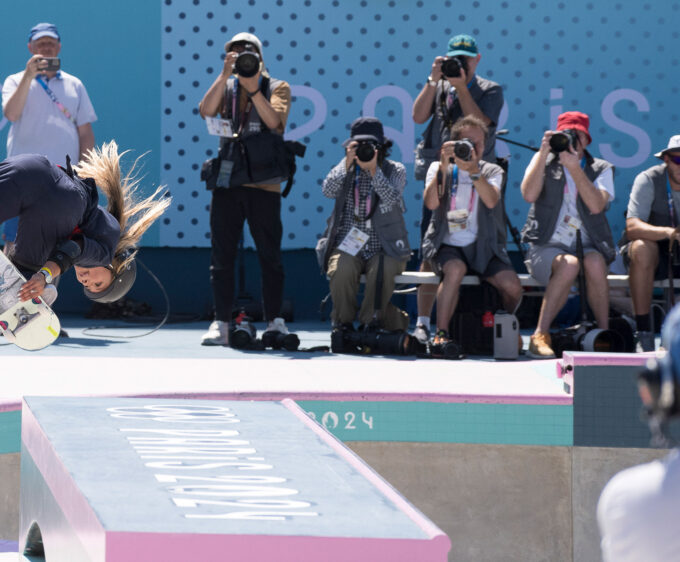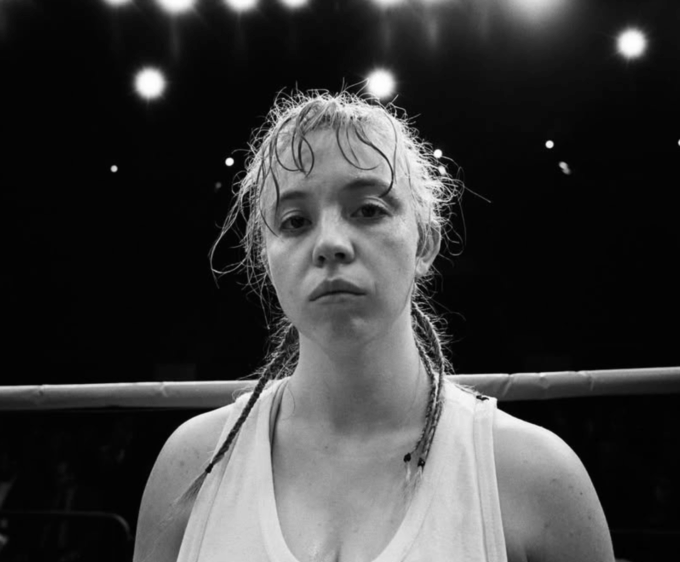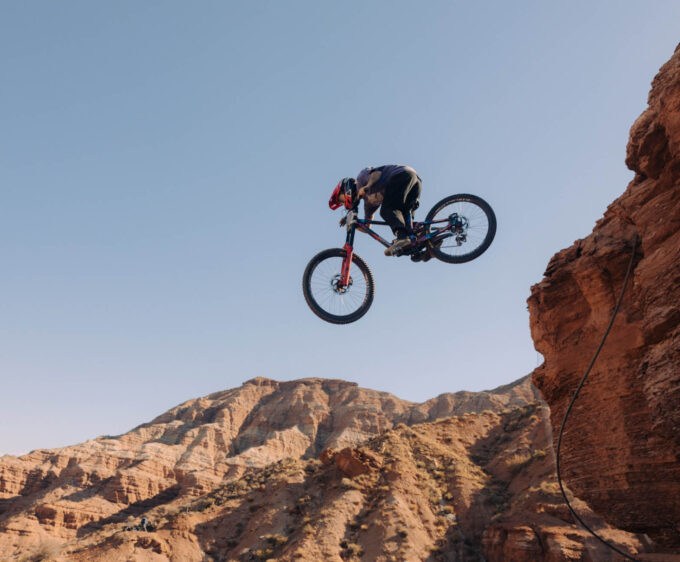
Dig & Drop
To defy gravity takes more than nerve. The women of Red Bull Rampage don't just ride, they use fearless skill and revolutionary collaboration to conquer Utah's cliffs and reshape extreme sport forever.
By Glorious
Photography by Dominique Powers
If you were searching for the most spectacular “why not?” in sport, you’d land somewhere on the crumpled red rocks of southern Utah. Every October, a handful of the world’s boldest mountain bikers gather in a dry, windswept desert just outside a place called Virgin, where everything about gravity seems up for negotiation.
This is Red Bull Rampage, and once you’ve seen it, your idea of possible never quite recovers.
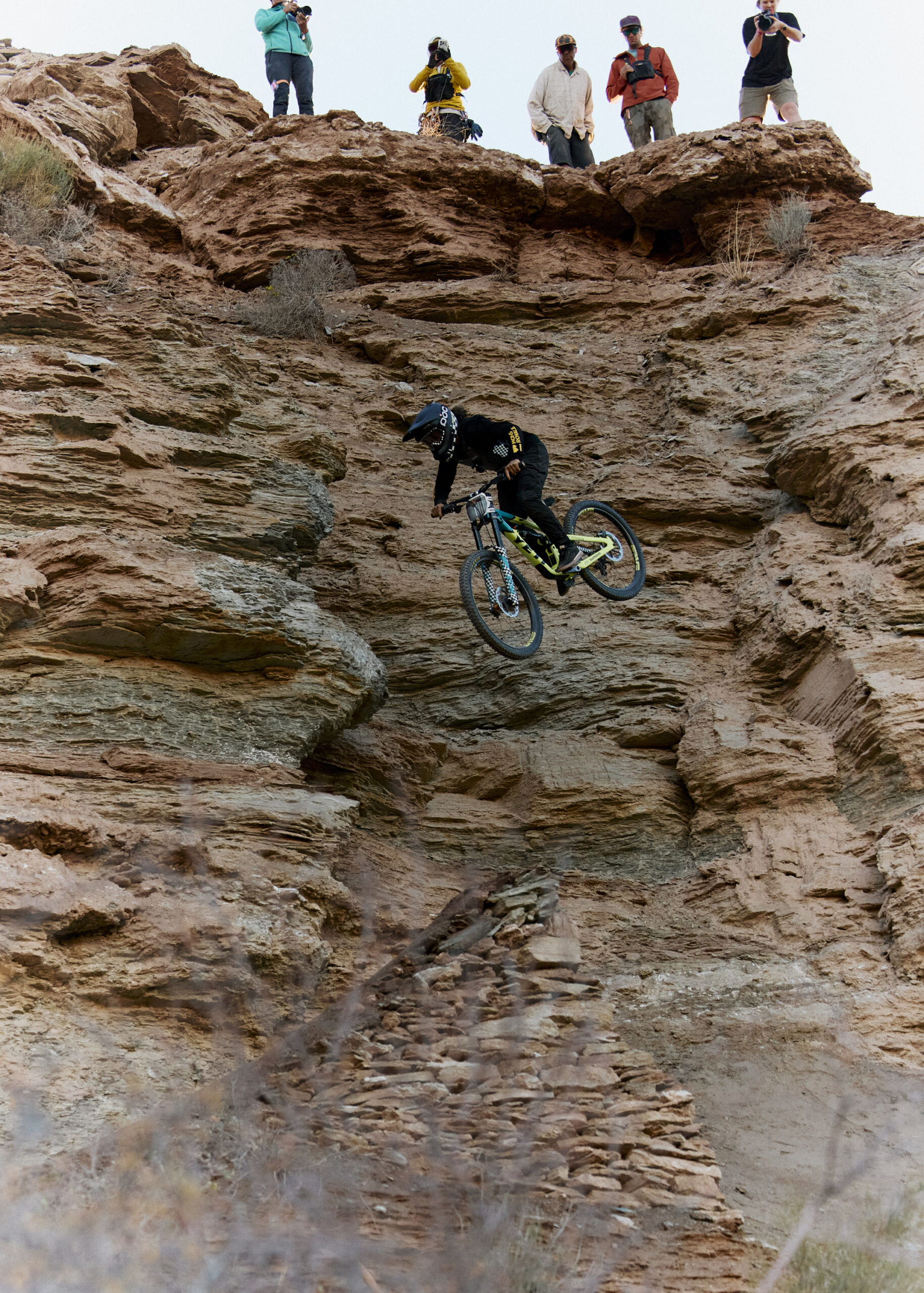
Most of us have never watched mountain bikers free-riding down vertical cliffs only to launch off edges and land, somehow stylishly, on the next patch of earth. Rampage is nothing like a race, nor even your average action sport contest. It’s more like an open challenge: build a line down the side of a mountain, one that no-one’s made before, and ride it, nails biting and heart absolutely thundering. There are no fixed paths, only possibility and risk, carved out of sandstone by people with a stubborn disregard for limits.

Freeride mountain biking sits at Rampage’s core. It’s not about who’s fastest round a track with taped-off corners. Riders scout the terrain, shape dirt into jumps and drops, decide which cliff or chute to take, and then attempt feats that most of us would only try in dreams. Creativity counts for nearly as much as courage. Tricks, style and flow get marked by judges who try their best to keep up with the ever-expanding dictionary of moves. This is an event for the outright inventive, where technical skills mean building as much as riding, and nothing is ever quite the same twice.

Such wildness needs documenting, which is where photographer Dominique Powers comes in, armed with a lens, a suitcase and an itch for the unexpected. Dominique travelled from her home in LA all the way out to the desert to cover the second-ever women’s Rampage for Glorious Sport. “The venue was WAY bigger than last year, at least double the size!” she told us after surviving a week in the red dust, camera at the ready.
But it wasn’t just about size; it was about connection. As Dominique saw up close, “There was a lot more collaboration between riders on the lines… That led to some awesome teamwork, especially between Vinny Armstrong, Kirsten Van Horne and Janelle Soukup. Janelle turned 20 last week and is definitely the newest to it all, and Vinny, a Rampage veteran, was super encouraging. The hype-up talk between the three of them was really special.”

connection

Each rider spends days digging and preparing their chosen line, from the top of the cliff to the bottom, shaping jumps that range from awkwardly chunky to heart-stoppingly steep. The build matters nearly as much as the ride. By competition day, spectators squint upward at a string of cyclists teetering on the edge, ready to leap into the unknown. Runs are fast, often less than a minute, and each one feels like an experiment in physics and nerve. You might see a backflip, a “suicide no-hander” (launching into the air, arms entirely off the handlebars), or something so new it doesn’t have a name yet. The soundtrack is shrieking, clapping, heartbeats. The result is part sport, part performance, part communal dare.
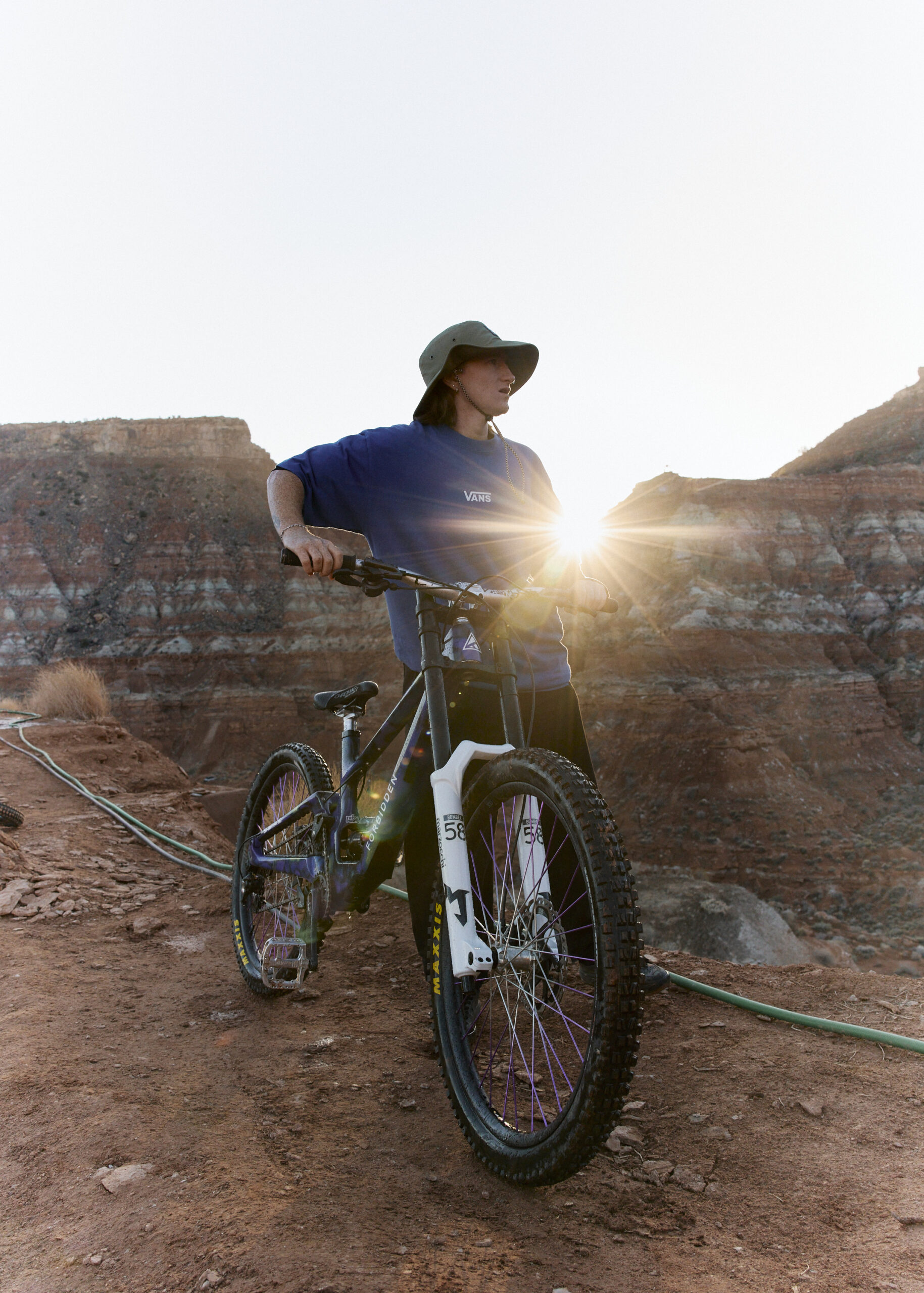
For all its headline-grabbing scale, Rampage is welcoming a new history. The event began in 2001 as a contest for the sport’s wildest men, riders charging down slopes so rugged they were nearly unrideable. In 2024, after years of groundwork and momentum from women’s freeride events like Red Bull Formation, Rampage finally opened its doors to female athletes. That inaugural women’s contest made headlines as the first time women built, rode and scored lines on Utah’s cliffs, with New Zealander Robin Goomes winning in a blaze of flips and style.

representation
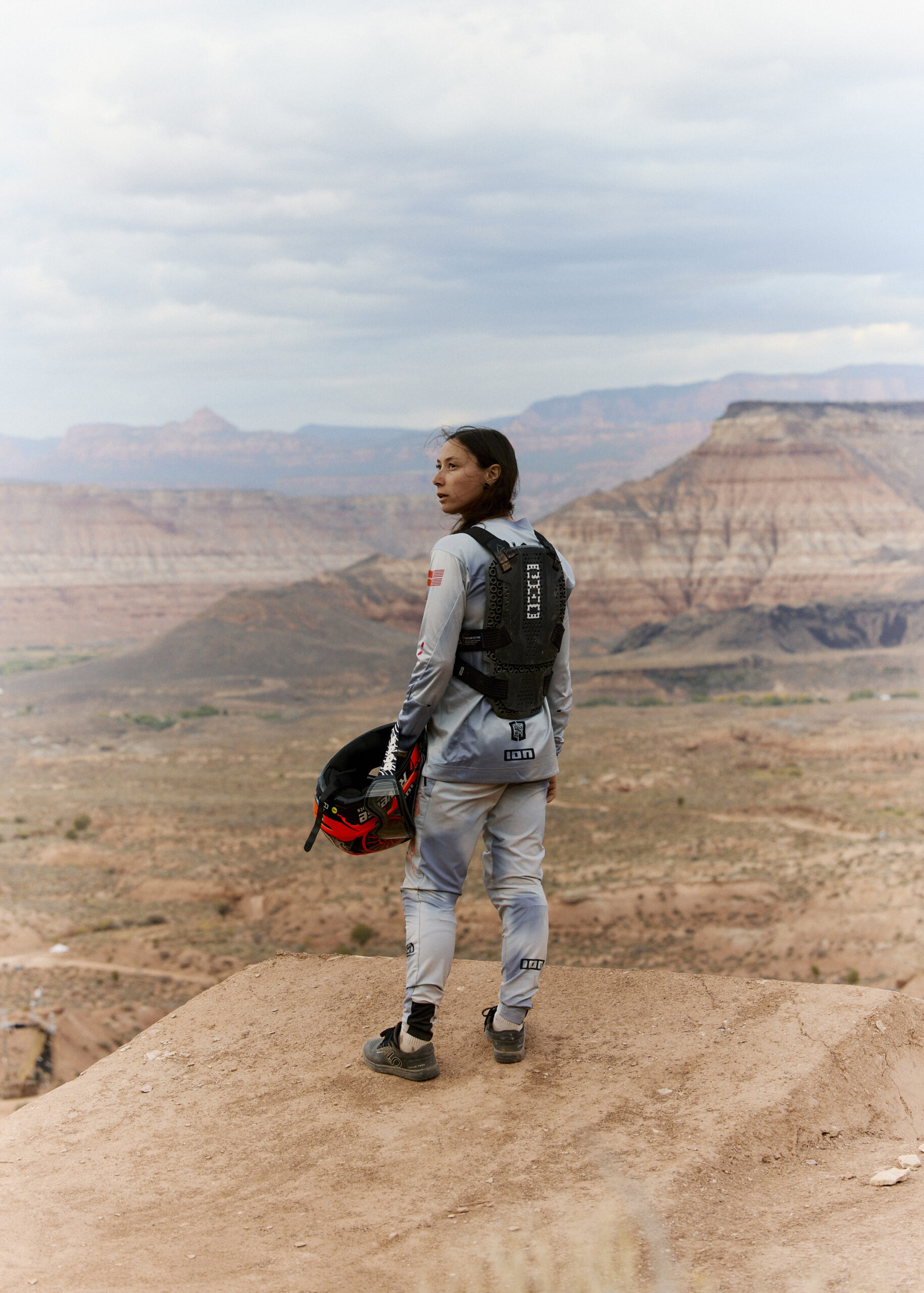
The 2025 venue, built on land previously used for other landmark women’s events, was expanded to allow new lines and greater freedom. The start list featured a dozen world-class athletes, but the desert dealt its usual blows. Injuries, including a broken wrist, concussion and broken leg, whittled the field to seven by competition day. Argentine Cami Nogueira dislocated her elbow earlier in the week, yet returned to ride her full line and even win the Toughness Award. On the day itself, all seven riders completed both runs without a single crash, a rare and joyful turn of events in a competition known for its danger.

Robin Goomes once again set the standard. The defending champion from New Zealand delivered a run that mixed control and audacity in perfect balance. Two backflips, two suicide no-handers and a crankflip gave her 89.50 points and another Rampage title. “I was really proud of my first run,” she said. “The main goal is to ride your run well. Obviously, I wanted to win, but all you can do is ride your best, and if you can do that, you have a good chance.” That understatement sums up why she’s become one of the sport’s icons: quiet composure in a place built on chaos.

Close behind was American Hannah Bergemann, a rider known for technical daring and calm precision. Returning after an injury that kept her out last year, Bergemann approached Rampage’s steep, unpredictable terrain with the kind of focus that defines this event. Her line was intricate and exposed, ending with a backflip and a grin that lit up the canyon. “The score was so tight I felt like I needed to try any little thing to change the score,” she noted in her post-ride interview. “I’m still so happy with how I rode and how everyone rode. My goal is completed, and it’s a cherry on top to be on the podium!”
Canadian Georgia Astle rounded out the top three, delivering a fast, technically perfect descent that included the enormous “El Presidente” drop, a 53-foot plunge that looks impossible even on screen. She finished her second run smiling. “I’m so relieved for all of the girls,” she said. “All of the girls got two runs in. There was no wind, and I’m hyped for us! I was excited to get through my second run.” For Astle and her peers, completing Rampage is victory enough, no matter what the scoreboard says.

Beyond the podium, the stories kept unfolding. Cami Nogueira’s comeback earned her the BFGoodrich Tires Toughness Award (yes, the same one mentioned earlier, because anyone who dislocates an elbow, straps it up and keeps going probably deserves another mention!). Kirsten Van Horne’s suicide no-hander won her the Utah Sports Commission Best Trick Award, while Bergemann received the McGazza Spirit Award, voted for by her fellow athletes in recognition of her positivity and leadership throughout the week. Each award spoke to more than performance and captured the shared respect that defines Rampage.
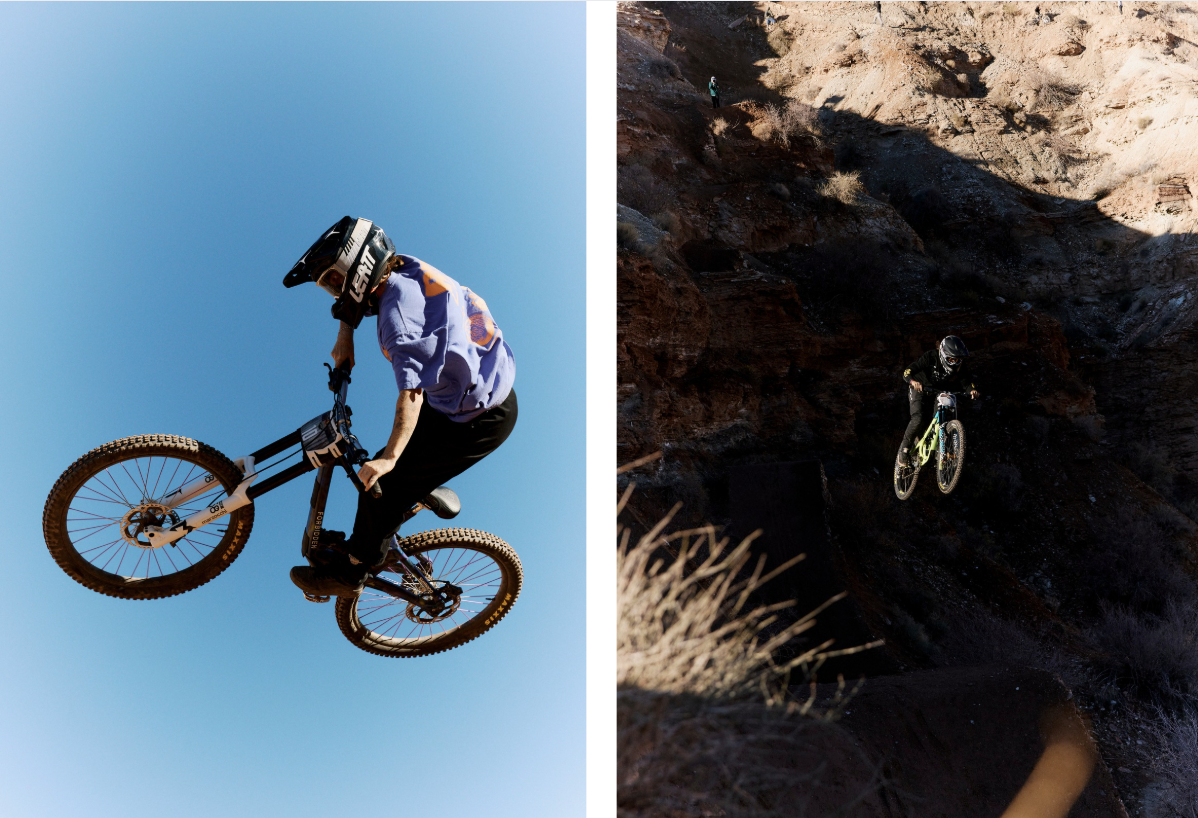
Throughout the week, the desert was full of small acts of teamwork that kept the whole thing alive. Dominique described it as a wave of collaboration between riders on the lines, and it showed in every shared tool, every nod of encouragement. Kirsten Van Horne and Vinny Armstrong helped Janelle Soukup, the youngest rider in the field, to build and ride her line. “Everyone riding in the same zone pushes each other and the good vibes are 100% contagious,” Janelle commented. These moments say as much about Rampage as the tricks or scores.
The women’s freeride movement has always thrived on this mix of competition and support. The terrain is unforgiving, the work physically demanding and the reward as emotional as it is professional. When riders spend days carving their lines into cliffs under the Utah sun, they know instinctively that encouragement keeps them going. What stood out this year was how naturally that balance came together. The riders weren’t just trying to win. They were building something bigger, proving that this new chapter of Rampage belongs entirely to them.
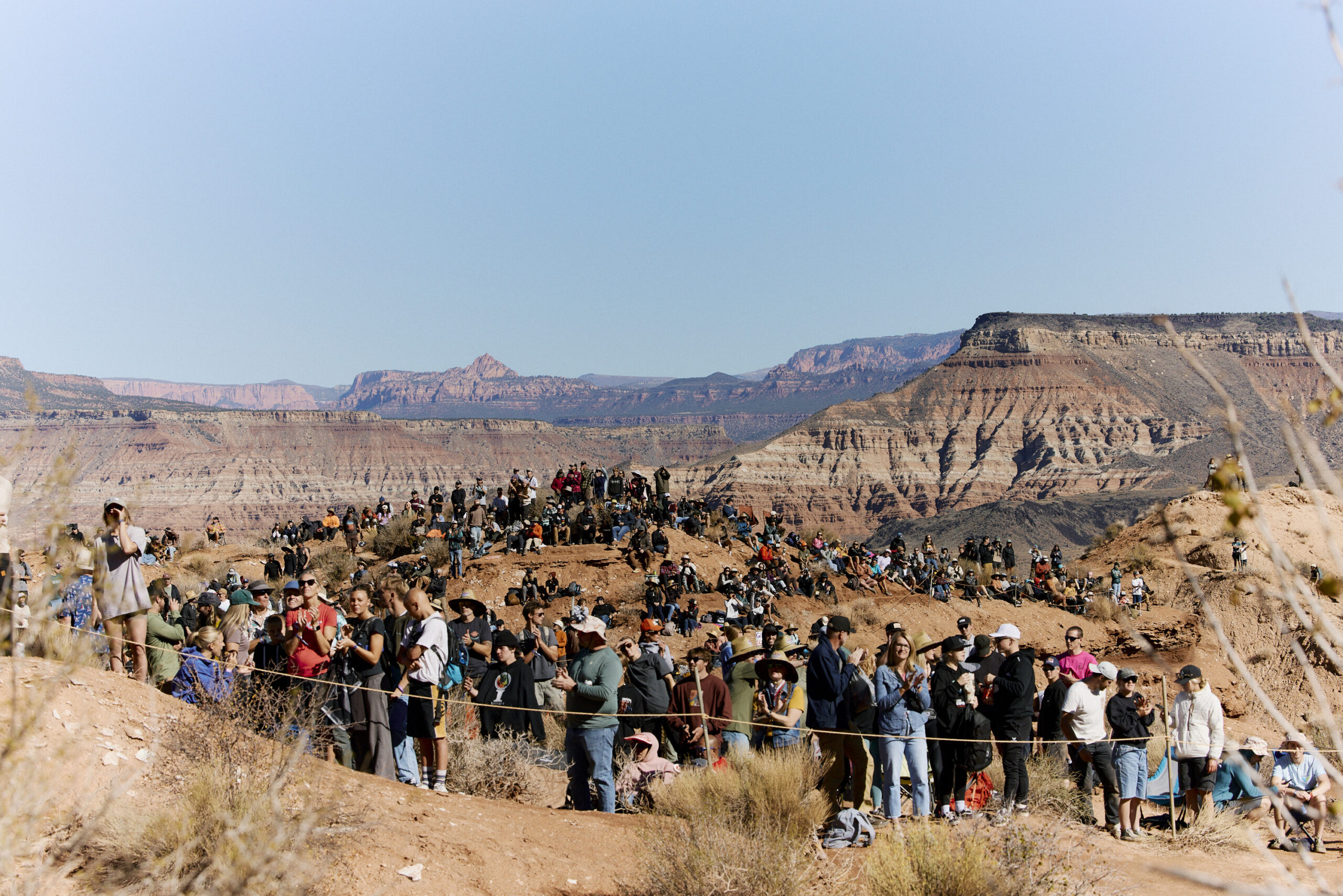
Rampage matters because it shows what happens when opportunity meets determination. The desert, with all its danger and spectacle, becomes a stage for something larger than the sport itself. These riders are not just facing down cliffs for entertainment. They are changing perceptions of what strength, artistry and ambition look like. It’s not about ticking boxes for equality, but about shaping a freeride culture that truly reflects everyone brave enough to drop in.

Dominique’s photographs captured this evolution in all its scale and intimacy – the tension of a pre-run breath, the blur of dust as tyres hit a landing, the shared laughter between runs. Her images show the side of Rampage that television coverage can’t always reach, the friendship threaded through fear. It’s the heartbeat that keeps the event human, even as the riding edges closer to superhuman.
If Dominique’s week in Utah proved anything, it’s that the wildest stories are found beyond the finish line, in the rebuilds, the shared tools and the seconds before a rider lets go of the brake. The cliffs may look the same from year to year, but thanks to the riders who show up, dig, ride and encourage, Rampage keeps moving forward. For freeride mountain biking, and especially for women, it’s not just a contest. It’s a revolution played out in dust and sunlight, with nerves left at the top and triumph written across the canyon walls.

In the end, Red Bull Rampage is a simple thing: a handful of people making impossibility look awfully tempting, together. You don’t need to know every trick, every feature or every technical term to feel it. What matters is the courage to drop in, the trust between riders and the sense that progress is something they build side by side. At Rampage, women are not just testing limits, they are rewriting them, and still finding time to cheer each other on while they do it.
Find out more about Red Bull Rampage here.
Discover more of Dominique Powers’ work here and be sure to follow her on IG here.
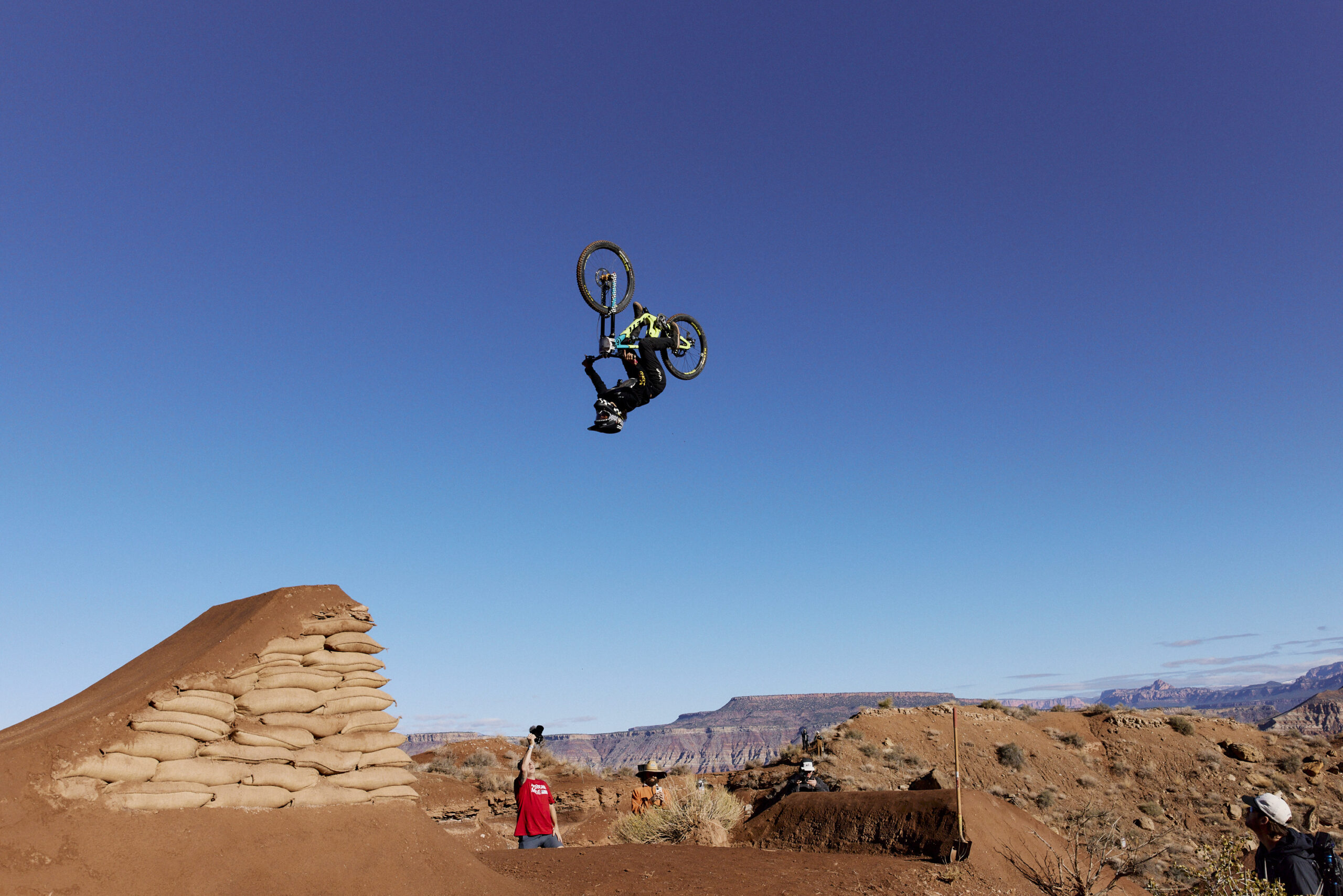
Title & final image featuring Robin Goomes

